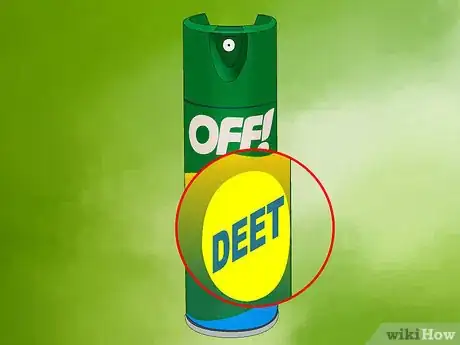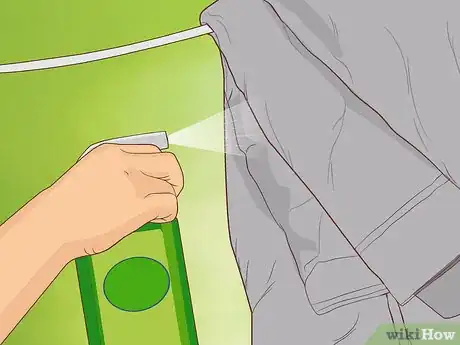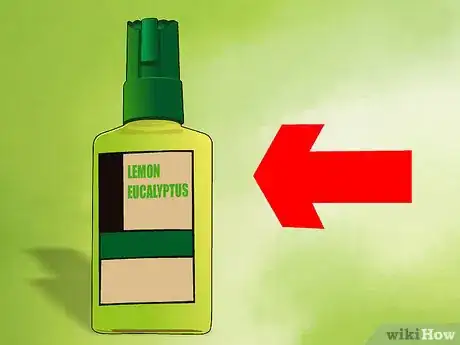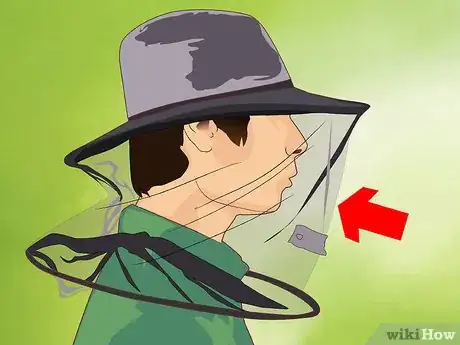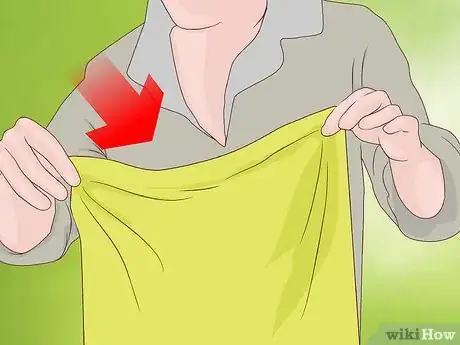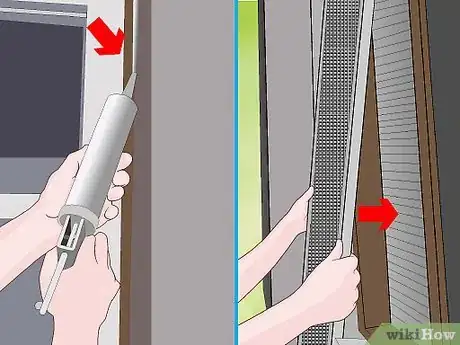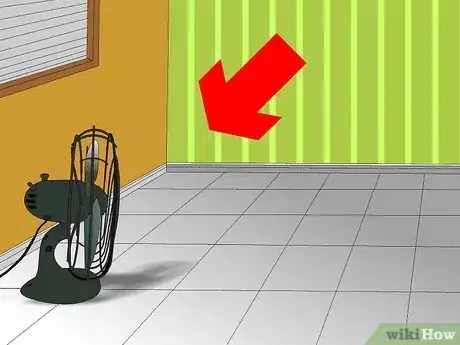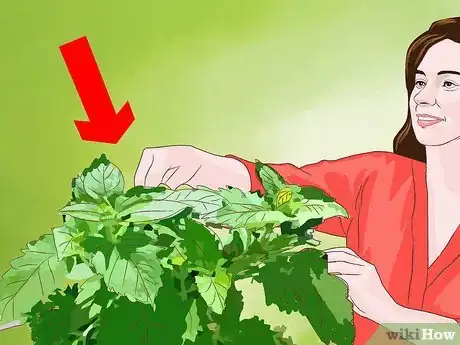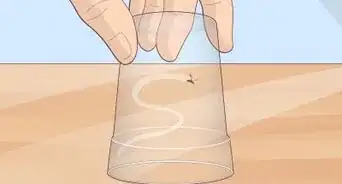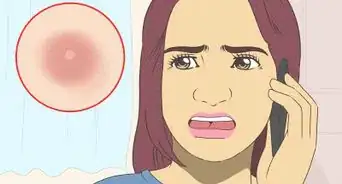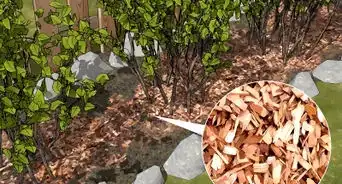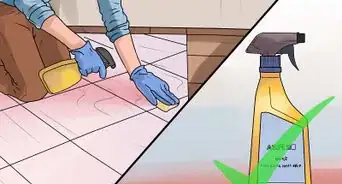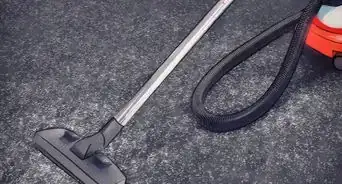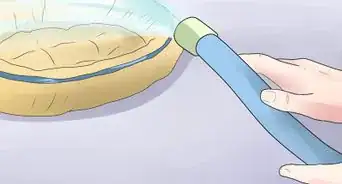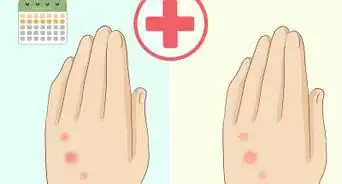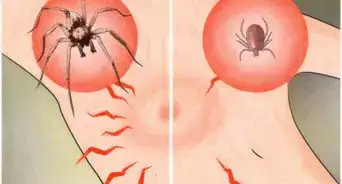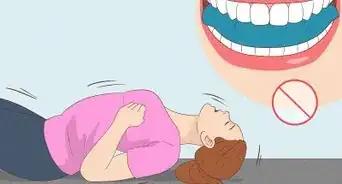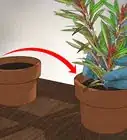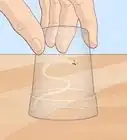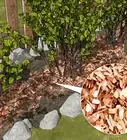This article was co-authored by Elias Weston. Elias Weston is a Cleaning Specialist and the Founder of Seatown Cleaners in Seattle, Washington. Elias specializes in helping clients find cleaning services with instant booking and flexible pricing. Seatown Cleaners offers standard, deep, and move-in/out cleaning services using green products and cleaning techniques. Every cleaner is thoroughly vetted and every cleaning is backed by a 100% money-back guarantee.
There are 14 references cited in this article, which can be found at the bottom of the page.
This article has been viewed 54,271 times.
Gnats are small, flying insects and resemble small mosquitoes. They often appear in large swarms called “mating swarms.” Like mosquitoes, there are biting and non-biting species of gnats. Though gnats do not carry infectious diseases, a gnat bite can cause swelling and irritation to the injured area and has the potential to cause a bacterial infection.
Steps
Using Chemical Bug Repellent
-
1Use a DEET-based chemical repellent. DEET (N, N-diethyl-meta-tolumide) is the most effective chemical ingredient for repelling bugs.[1] Apply bug repellent containing DEET to all exposed areas of skin before going outside. Be sure to reapply the repellent according to the product's label's instructions. [2]
- Make sure not to use DEET-based repellents when wearing sunglasses or plastic eyeglass lenses, as the chemical can dissolve plastics and some synthetic materials.[3]
- A few studies have suggested there can be adverse side effects to DEET. DEET-containing repellents have however been approved by the EPA and the Center for Disease Control as safe for long-term human use when used according to the label instructions.[4]
-
2Apply a Picaridin-based repellent. Picaridin is a synthetic compound derived from plant extract. It is man-made like DEET, but a compound rather than a chemical. [5] Picaridin has not been as widely tested as DEET, but current studies show it to be just as effective, and it is not harmful to any materials. Many of the major bug repellent producers, such as Cutter, carry repellents based on Picaridin.[6]Advertisement
-
3Spray permethrin repellent on clothing. Permethrin is both a repellent and insecticide, meaning that has the ability to kill bugs on contact as well as repel them by scent. It is recommended by the EPA (U.S. Environmental Protection Agency) for use on clothing, shoes, bed nets, and camping gear.[7]
- Spray only on fabrics and do not spray on clothing while you're wearing it. Use only repellents and permethrin-based products that have specific instructions for treating clothing.[8]
- After an item has been sprayed with a product containing permethrin, the fabric will repel insects through several washings.
Using Bug Repellent with Natural Ingredients
-
1Try lemon eucalyptus oil. Some people are more comfortable with natural instead of chemical repellents. Lemon eucalyptus oil has been proven to repel bugs. [9] It is sometimes recommended by pediatricians as an alternative to DEET or Picaridin. Like DEET-based repellents, repellents containing lemon eucalyptus oil are recommended by the CDC (Center for Disease Control) as an effective and safe way to repel bugs.[10]
- You can buy many repellents based on the oil, such as Repel's Lemon Eucalyptus Repellent. These are not all-natural repellents, but are based on the oil.
- Make your own. A natural, homemade lemon eucalyptus repellent should consist of around 10% lemon eucalyptus oil mixed with a carrier oil, such as witch hazel, vodka, or olive oil. Take a 4 oz clean spray bottle and fill it with 2 ounces of distilled or boiled water. Add 1 ounce of witch hazel or vodka then about 50 to 75 drops of essential oil.[11]
- Avoid using any product containing lemon eucalyptus oil on children under three years old.
-
2Apply other botanical oils. Other kinds of natural oils may repel gnats. You can purchase either the oil itself or a repellent containing it. Oil of citronella, lemongrass, cedarwood, garlic, spearmint, lemon mint or cinnamon are common and can be sprayed on your skin or in places where gnats gather.
- To make a natural insect repellent spray using an essential oil, mix the essential oil with the carrier oil or alcohol, using the same process as for lemon eucalyptus oil. If making a large batch, mix the repellent so it's 5-10% essential oil, or 1 part essential oil with 10-20 parts carrier oil or alcohol. For a smaller batch, use 10-25 drops (total) of essential oils and 2 tablespoons of a carrier oil or alcohol. Rub or spray the natural insect repellent onto skin or clothing, using care to avoid the sensitive eye area.
- You can also crush fresh leaves of these plants and rub the leaves on your skin to deter gnats that bite.[12] You will need to reapply oils or leaves about every half an hour, since they provide only about 20-30 minutes of protection.
Wearing the Appropriate Attire
-
1Wear loose-fitting clothing. Gnats cannot bite through clothing, so an easy way to avoid getting bit is to wear clothing that fits loosely. Tight clothing can stretch over the skin and provide holes in the fabric that gnats can bite you through.
-
2Choose long clothing. Long sleeve shirts, gloves, and jeans, for example, provide good coverage. This is especially helpful in summer and early autumn when bugs are more active.[13]
-
3Use netting to protect your face and neck. This is a good short-term solution when you are faced with a large number of gnats. Tie ordinary garden netting over your head. Wearing a hat makes this easier. Throw the netting over your head or hat, wrap it loosely around your neck, and either tuck it into your shirt or tie loosely with a piece of strong. This will protect your head and neck while still allowing you to see.
-
4Try permethrin-treated clothing. In extreme cases, you may wish to buy permethrin-treated clothing to cover your entire body. It is the only insect repellent currently used during clothing factory production. You may choose to buy this clothing instead of spraying your own clothing with permethrin. It is EPA-approved as safe for everyone, including children, to wear, and kills and repels bugs. [14]
Optimizing Your Environment Against Gnats
-
1Seal off your house. Gnats can often be a problem while you are inside. If they are in your house, make sure that you close all your doors and windows.
- Seal any unnecessary openings. If necessary, use tape or chalk to close gaps under door frames or around window edges. You can use silicone caulk to seal cracks and crevices in baseboards, cupboards, sinks, electrical outlets and so on. [15] You may want to buy a caulking gun to make this process easier.
- Install screens on the outside of your windows, doors, and heating and cooling vents that are small enough that gnats can not get through. Charcoal fiberglass screens work best. [16]
- Remove anything around the exterior that may attract gnats. Stacked firewood, leaves, debris, garbage, and standing water can all attract gnats. Keep these at least 18 inches from the exterior of the house.[17]
-
2Place nets over outdoor or exterior areas. Loose garden netting can be used to cover an outdoor dinner table or a camping tent. Or you can buy removable screens to cover porch or deck areas. use staples or splines to keep them in place.[18]
-
3Drive gnats away with fans. A good short-term solution is to keep air circulating in the area where you are. Fans will drive gnats away, and the airflow prevents them from landing on and biting you. This is a good short-term solution for either indoors or outdoors.
-
4Grow plants that repel gnats. A variety of common garden plants and flowers contain elements that are likely to repel gnats. These include geraniums, lemon thyme, lavender, and Mexican marigolds.[19]
- Geranium flowers contain citronella, which appears to strongly repel gnats and is a common ingredient in commercial repellents. Grow geraniums in hanging planters on your porch or patio to repel gnats.[20]
- Lemon thyme is a perennial herb with leaves that contain citronella. You can grow it in your garden in the sun.
- Lavender has a scent that is pleasant to humans but very unpleasant to gnats. You can grow in the ground or in a pot.
- Mexican marigolds have a musty smell the drives away gnats and other flying insects. Grow in your garden in full sunlight.
Expert Q&A
-
QuestionHow can I get rid of gnats that won't leave my kitchen?
 Elias WestonElias Weston is a Cleaning Specialist and the Founder of Seatown Cleaners in Seattle, Washington. Elias specializes in helping clients find cleaning services with instant booking and flexible pricing. Seatown Cleaners offers standard, deep, and move-in/out cleaning services using green products and cleaning techniques. Every cleaner is thoroughly vetted and every cleaning is backed by a 100% money-back guarantee.
Elias WestonElias Weston is a Cleaning Specialist and the Founder of Seatown Cleaners in Seattle, Washington. Elias specializes in helping clients find cleaning services with instant booking and flexible pricing. Seatown Cleaners offers standard, deep, and move-in/out cleaning services using green products and cleaning techniques. Every cleaner is thoroughly vetted and every cleaning is backed by a 100% money-back guarantee.
Cleaning Specialist Fill a small glass with a few tablespoons of apple cider vinegar. Cover the top of the glass with a layer of plastic wrap and secure it with a rubber band. Poke a few holes in the plastic wrap with a toothpick and leave the container out in your kitchen. The gnats will trap themselves and die in the glass.
Fill a small glass with a few tablespoons of apple cider vinegar. Cover the top of the glass with a layer of plastic wrap and secure it with a rubber band. Poke a few holes in the plastic wrap with a toothpick and leave the container out in your kitchen. The gnats will trap themselves and die in the glass.
References
- ↑ http://www.nhs.uk/Conditions/Bites-insect/Pages/Prevention.aspx
- ↑ http://www.cdc.gov/westnile/faq/repellent.html
- ↑ http://www.outdoors.org/publications/outdoors/2012/equipped/picaridin-vs-deet-insect-repellent.cfm
- ↑ http://www.cdc.gov/westnile/faq/repellent.html
- ↑ http://www.outdoors.org/publications/outdoors/2012/equipped/picaridin-vs-deet-insect-repellent.cfm
- ↑ http://www.consumerreports.org/cro/magazine/2015/05/what-really-works-against-bug-bites/index.htm
- ↑ http://www.cdc.gov/westnile/faq/repellent.html
- ↑ http://npic.orst.edu/pest/mosquito/ptc.html
- ↑ http://www.consumerreports.org/cro/magazine/2015/05/what-really-works-against-bug-bites/index.htm
- ↑ http://www.cdc.gov/westnile/faq/repellent.html
- ↑ http://tasty-yummies.com/2013/07/17/homemade-essential-oil-insect-repellent-spray/
- ↑ http://homeguides.sfgate.com/natural-repellent-gnats-fruit-flies-88720.html
- ↑ http://www.nhs.uk/Conditions/Bites-insect/Pages/Prevention.aspx
- ↑ http://www2.epa.gov/insect-repellents/repellent-treated-clothing
- ↑ http://www.nrdc.org/health/pesticides/gpests.asp
- ↑ http://www.homedepot.com/p/New-York-Wire-36-in-x-25-ft-Charcoal-Fiberglass-Small-Insect-Screen-FCS8499-M-FCS8499-M/203063652
- ↑ http://www.safebee.com/home/natural-ways-bug-proof-your-home
- ↑ http://www.hometips.com/diy-how-to/porch-deck-screening.html
- ↑ http://homeguides.sfgate.com/outside-plants-repel-gnats-27408.html
- ↑ http://naturehacks.com/how-to-naturally-repel-gnats/
About This Article
Gnat bites can be itchy and uncomfortable, so you’ll want to do your best to avoid them. Spray a bug repellent containing deet or picaridin onto your skin to protect yourself from gnats. For a nautral option, use lemon eucalyptus oil, garlic oil, or cedarwood oil. You should also wear long, loose-fitting clothes, which gnats can’t bite through. To protect your home, install mesh screens on the outside of your windows and doors if you haven’t already. For a short term solution, keep a fan running in the room, which will blow gnats away from you. For more tips, including how to grow plants that repel gnats, read on!
